
ALTHOUGH not as common as it used to be, the chaffinch (Fringilla coelebs) is still found over the entire area of Britain and is the most numerous seedeater in Europe. The UK population is residents apart from some migrants from Sweden, Finland, and Norway, which appear on the UK’s east coast in October.
The male chaffinch is just as colorful as many exotic finches and, although it maintains similar plumage all the year-round, it looks its best in spring when abrasion has worn away the buffish fringe to the feathers acquired during the autumn molt. This subdues the color of the plumage during autumn and winter. The pink bill it has had during those months now turns blue.
Both males and the more sombre female are instantly recognizable with their white wing bars and outer tail feathers which flash when the birds take flight, especially when they rise from the ground. A feature not easily identifiable in the field is the green rump of both sexes, which is often a surprise to people handling chaffinches for the first time. This easily distinguishes it from the white rump of its close relative, the winter visiting brambling. (Chaffinch x brambling hybrids have been produced in captivity.)
There is an abundance of old country names for the chaffinch, whose name originates from its habit of searching stubble fields for chaff (seeds among the seed hulls) or frequenting farmyard areas where there were heaps of chaff from threshing machines. In winter, flocks of mainly male chaffinches would converge in farm areas. This behavior is the origin of its Latin name celebs, meaning bachelor. Chaffey was once a common name and is still used among British birdkeepers. The nickname Chink or Pink relates to its contact call; blue cap, pied finch and white wing refer to its plumage. Pea bird is explained by its liking for the garden vegetable.
Esta historia es de la edición October 23, 2019 de Cage & Aviary Birds.
Comience su prueba gratuita de Magzter GOLD de 7 días para acceder a miles de historias premium seleccionadas y a más de 9,000 revistas y periódicos.
Ya eres suscriptor ? Conectar
Esta historia es de la edición October 23, 2019 de Cage & Aviary Birds.
Comience su prueba gratuita de Magzter GOLD de 7 días para acceder a miles de historias premium seleccionadas y a más de 9,000 revistas y periódicos.
Ya eres suscriptor? Conectar
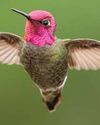
The World's Best-Known Hummingbird?
Intensively studied, the gem-like Anna’s hummingbird is a welcome visitor to the gardens of America’s most populous state: California. Bill Naylor investigates its life history
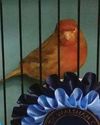
The charm of the English Cinnamon
Despite its long and complicated history, the true Cinnamon canary is still with us – in the hands of a tiny group of breeders. DONALD SKINNER-REID reckons it deserves wider appreciation
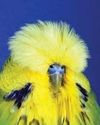
Spangles: a personal overview
FRED WRIGHT relates a budgie story of over-exploitation, consequent problems and abundant potential for the future

New converts to old breeds
Old and rare canaries have a reputation for adding fresh interest and challenge to the hobby. PETE HOOK and NICK JOY agree, and explain the birds’ charm to Dave Brown

Themed aviaries are a hit with the public at annual Stafford show
DECORATIVE AVIARY DISPLAYS from a CBS and an online bird keeping advice group were voted in the top three by visitors for the inaugural Stafford Aviary Competition.
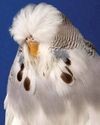
Pieds with potential
More than just a lesser variety, the dominant pied will introduce challenge and change into most studs, reckons CLIVE WAKEMAN. Here he discusses pairings to try and others to avoid

Club News
Welcome to the club and show pages – the bit that’s all about you Results: convention, specialist & rare and Breeder of the Year

Canaries Month by Month:
With Christmas around the corner, BRIAN KEENAN is well into his winter programme, and reckons he might deserve a nice outcross
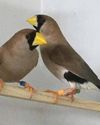
Smart Choice, Docile Nature
Dave Brown welcomes the masked grassfinch to his birdroom and shares advice on this lovely Australian species
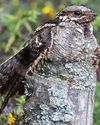
The truth about the ‘flying toad'
Odd local names and weird superstitions can’t hide the beauty and elegance of the nightjar, a species that has made a fascinating subject in a few zoo collections, reveals BILL NAYLOR